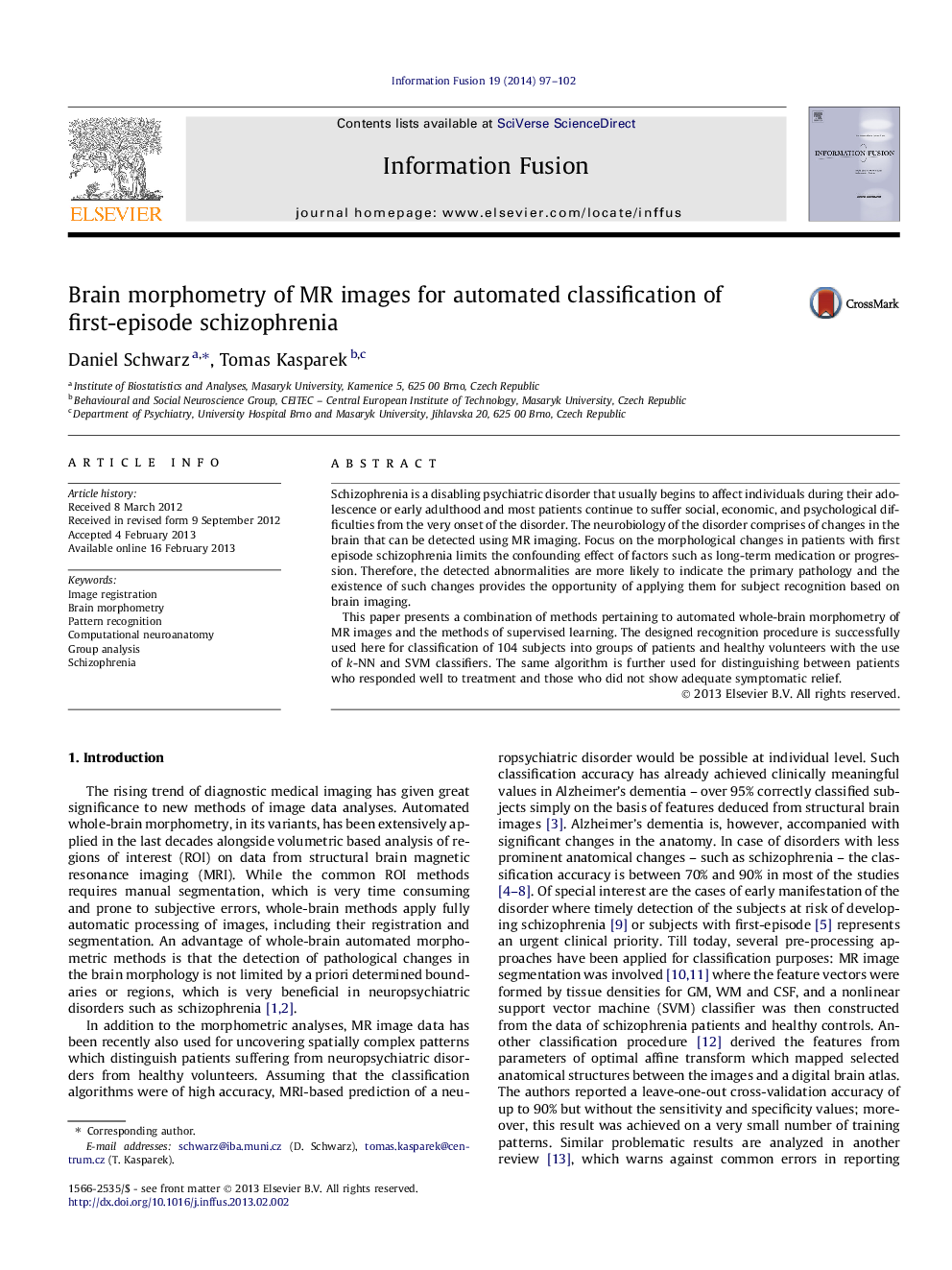| Article ID | Journal | Published Year | Pages | File Type |
|---|---|---|---|---|
| 528153 | Information Fusion | 2014 | 6 Pages |
Schizophrenia is a disabling psychiatric disorder that usually begins to affect individuals during their adolescence or early adulthood and most patients continue to suffer social, economic, and psychological difficulties from the very onset of the disorder. The neurobiology of the disorder comprises of changes in the brain that can be detected using MR imaging. Focus on the morphological changes in patients with first episode schizophrenia limits the confounding effect of factors such as long-term medication or progression. Therefore, the detected abnormalities are more likely to indicate the primary pathology and the existence of such changes provides the opportunity of applying them for subject recognition based on brain imaging.This paper presents a combination of methods pertaining to automated whole-brain morphometry of MR images and the methods of supervised learning. The designed recognition procedure is successfully used here for classification of 104 subjects into groups of patients and healthy volunteers with the use of k-NN and SVM classifiers. The same algorithm is further used for distinguishing between patients who responded well to treatment and those who did not show adequate symptomatic relief.
Graphical abstractFigure optionsDownload full-size imageDownload as PowerPoint slideHighlights► We classify schizophrenia patients and healthy volunteers only based on MRI data. ► Two different brain morphometry methods are combined for extraction of features. ► Higher classification accuracy is achieved when both types of features are used. ► The recognition procedure is applied also in prediction of treatment outcomes.
